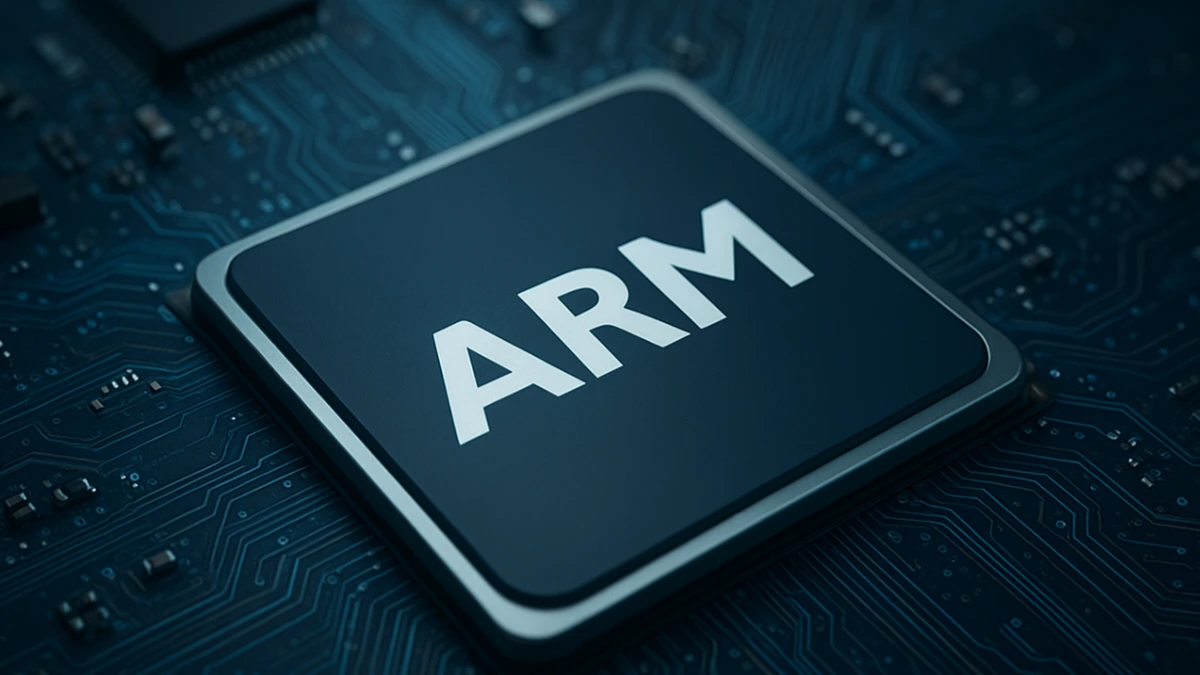LONDON (TECHY QUANTUM) — Arm Holdings, the British semiconductor design firm now listed on Nasdaq under the ticker ARM, is emerging as one of the most promising technology stocks for long term investors.
As the global race to develop artificial intelligence systems accelerates, Arm’s power efficient chip designs are gaining widespread traction across mobile devices, data centers, and consumer electronics.
Industry analysts say the company’s architecture, prized for its efficiency and adaptability, positions Arm at the center of a transformative era for computing one where energy consumption and performance optimization have become defining challenges.
Arm Holdings has long been a silent force behind much of the world’s computing infrastructure. Unlike traditional chip manufacturers such as Intel and Nvidia, Arm does not produce its own silicon.
Instead, it licenses its chip architectures to hardware makers, who integrate the designs into their own products. This model has yielded consistent profitability.
In its last fiscal year, Arm reported revenue of about $4 billion, generating nearly $800 million in net income. While smaller in scale than semiconductor giants, Arm’s licensing business carries high margins and steady demand.
Founded in Cambridge, England, Arm became a key player in mobile computing by supplying the blueprints for chips used in billions of smartphones.
With the rise of AI, that influence is expanding rapidly into data centers and PCs, where energy efficiency has become a competitive necessity.
“Arm’s low power architecture has moved from being a mobile advantage to a strategic necessity in AI,” said David Tran, a semiconductor analyst at Morgan Global Research.
AI workloads are consuming enormous energy, and Arm’s designs offer a path to scale without overwhelming data center power grids.
The company’s designs already underpin Amazon Web Services’ Graviton processors, which the cloud provider says reduce operational costs by up to 20% compared with non Arm chips.
Apple, meanwhile, uses Arm based processors across its Mac and iPhone product lines, leveraging the architecture’s ability to deliver high performance with minimal energy drain.
Analysts argue that Arm’s ability to scale efficiently across multiple sectors from smartphones to supercomputers gives it resilience against market fluctuations.
The AI boom is not just about computing speed, said Tran. “It’s about sustainability, and Arm is one of the few companies addressing that head on.”
According to industry tracker Semiconductor Market Insights, global data centers accounted for roughly 4% of total electricity consumption in 2023. That figure is expected to double by 2026, largely due to the expansion of AI and machine learning operations.
Arm has forecast that its designs could represent half of all data center processors worldwide by the end of 2025. If realized, that would mark a dramatic shift in a sector historically dominated by x86 based chips from Intel and AMD.
Comparatively, Intel’s annual revenue exceeds $50 billion, and Nvidia’s stands above $60 billion, yet both face increasing pressure to curb power consumption.
Arm’s lighter footprint offers an alternative that is attracting a growing number of cloud and enterprise clients. “Efficiency is now the metric that matters most,” said Priya Desai, a senior technology strategist at TechHorizons.
AI firms are no longer just chasing speed they’re chasing sustainability. Arm’s architecture provides both. At a recent technology conference in San Francisco, developers and engineers echoed similar sentiments about Arm’s expanding role.
Every AI startup I know is running into the same issue power costs,” said Ethan Wallace, founder of a small machine learning firm based in Austin, Texas.
“We’re experimenting with Arm based servers because they help us stay within budget while keeping our performance targets.”
Meanwhile, in Cambridge, where Arm’s headquarters remain a symbol of the U.K.’s tech innovation, local businesses are optimistic about the company’s global momentum.
“Arm put this city on the technology map,” said Sarah Mitchell, a café owner who has served employees since the 1990s. “It feels like the world is finally catching up to what they’ve been doing here for decades.”
The next two years will be pivotal for Arm Holdings as the company deepens its presence in cloud infrastructure and artificial intelligence.
Executives have indicated confidence in their roadmap, emphasizing new partnerships and licensing opportunities aimed at AI specific processors.
Still, challenges remain. Competition from RISC-V an open source chip architecture could pressure Arm’s licensing fees, while geopolitical tensions in the semiconductor supply chain may introduce volatility.
Despite those risks, most analysts remain bullish. “Arm’s designs are becoming integral to the AI ecosystem,” said Desai. “Even if growth slows temporarily, its licensing model and brand strength ensure long term stability.”
Arm’s share price has mirrored investor optimism, rising steadily since its 2023 Nasdaq debut. As data centers, cloud providers, and mobile manufacturers all push for efficiency, the company’s intellectual property could become one of the defining assets of the AI age.
Arm Holdings’ position at the intersection of artificial intelligence, energy efficiency, and global computing infrastructure gives it a unique edge in the technology sector.
With an expanding customer base and a proven business model, the company’s growth trajectory appears aligned with the industry’s most urgent needs.
Whether in smartphones or supercomputers, Arm’s power efficient designs continue to drive the digital transformation shaping the next decade of computing.

